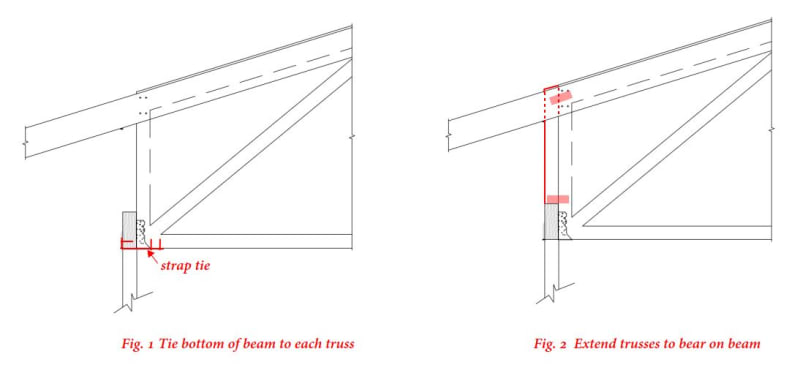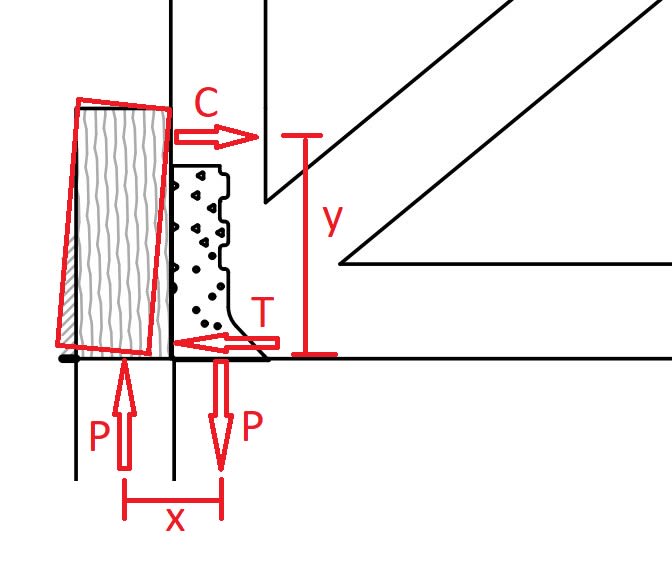struct_eeyore
Structural
- Feb 21, 2017
- 264
First of all, happy memorial day to all of the workaholics and those obsessed enough with engineering to be on this forum today.
I've got yet another torsional compatibility question...
I'm removing a bearing wall, and instead using an an upset LVL with buckets for the existing trusses. I'm curious to what extent you would go to account for torsion in such a scenario. I've ran the withdrawal loads on the nails in the bucket - they work on their own, and this leaves me to think that I can take the shear all the way to the face of the LVL. The LVL sits on post on one end and on a HD bucket on the other. Assuming I clip the top of the lvl to ea. truss, would creating this nominal moment connection be sufficient to remove any unwanted tosion at ea. end of the LVL?
[URL unfurl="true"]https://res.cloudinary.com/engineering-com/image/upload/v1716836114/tips/TRUSS_OFFSET_hq6oft.pdf[/url]
I've got yet another torsional compatibility question...
I'm removing a bearing wall, and instead using an an upset LVL with buckets for the existing trusses. I'm curious to what extent you would go to account for torsion in such a scenario. I've ran the withdrawal loads on the nails in the bucket - they work on their own, and this leaves me to think that I can take the shear all the way to the face of the LVL. The LVL sits on post on one end and on a HD bucket on the other. Assuming I clip the top of the lvl to ea. truss, would creating this nominal moment connection be sufficient to remove any unwanted tosion at ea. end of the LVL?
[URL unfurl="true"]https://res.cloudinary.com/engineering-com/image/upload/v1716836114/tips/TRUSS_OFFSET_hq6oft.pdf[/url]


